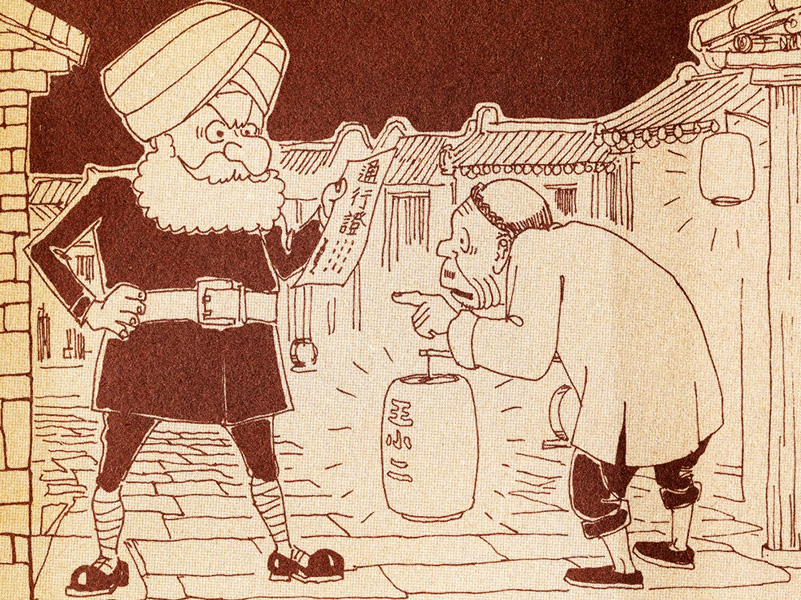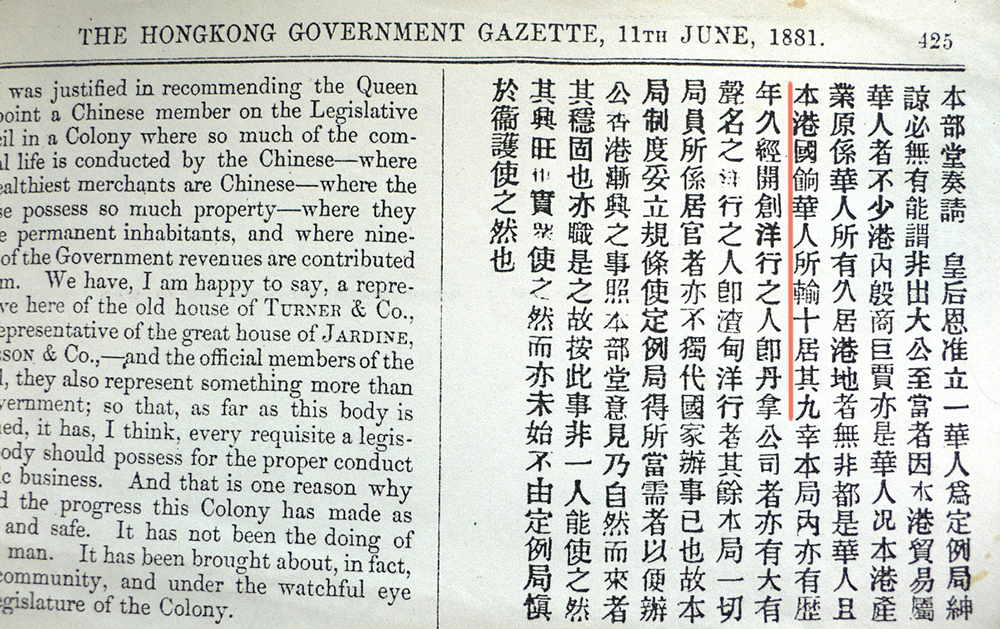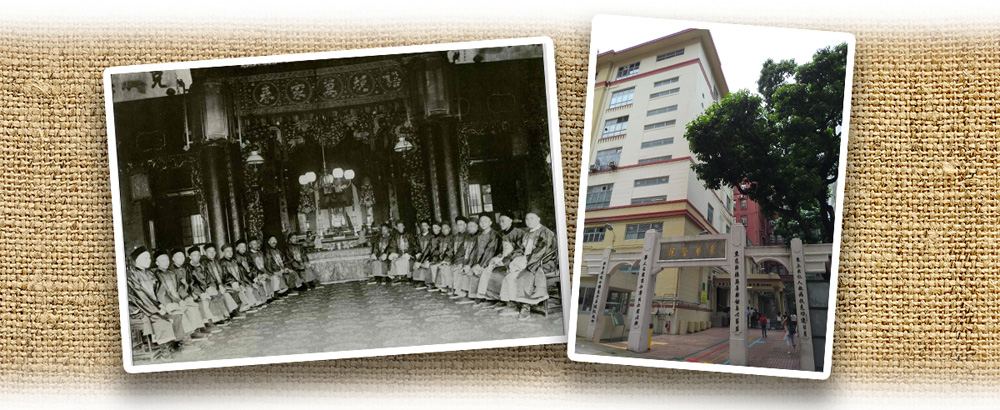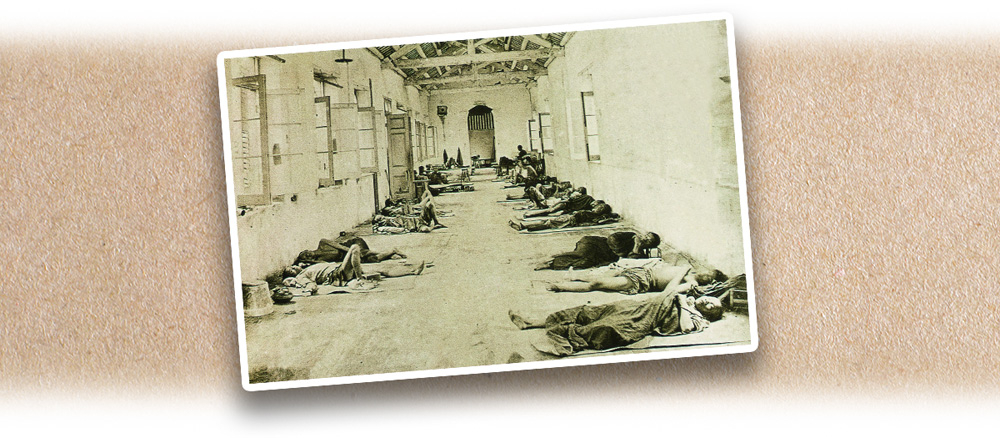From the establishment of Hong Kong as a free port to the early 20th century, the majority of the local population was Chinese. However, the political and economic powers were in the hands of the British. For a long time, the British took up the posts of senior government officials, and all the seats in both Executive Councils and Legislative Council. British merchants once monopolised the economic lifeline of Hong Kong. Senior executives of British banks and companies in Hong Kong were appointed as members of the two Councils and became politically influential.
Regarding social life, the British implemented racial discrimination policies, such as the residential segregation policy in Hong Kong. The central part of Hong Kong Island and the Mid-Levels were zoned for Westerners while the eastern and western ends were zoned for the Chinese. In jurisdiction, the Qing law was enforced when handling most cases involving the Chinese. In contrast, the British law was enforced when handling cases involving Westerners. More restrictions were placed on the Chinese. Soon after Hong Kong became a free port, a curfew was imposed on the Chinese until June 1897. When Hong Kong was thriving during the 1870s to 1880s, Hong Kong Chinese merchants became too influential to be ignored. The authorities thus started to recruit Chinese elites to assist in administering Hong Kong, which improved the social status of the upper-class Hong Kong Chinese.
|
|
From the establishment of Hong Kong as a free port to the early 20th century, the Hong Kong Government implemented a number of discriminative policies on the Chinese. Why did the social status of the upper-class Chinese gradually improve at the same time? |
|
|
See answer below. |
Wyndham Street in Hong Kong in 1846. The picture portrays the Chinese doing hard work and the British living in a Western-style building. From 1841 to the early 20th century, the British in Hong Kong enjoyed a superior position in politics, economy, law, and society.
The photo above reflects the racially based residential segregation policy in Hong Kong in the 19th century. The residential buildings in front were for the Chinese in the Western District on Hong Kong Island in early years. Those at the back were for Westerners. At that time, Chinese people were not allowed to enter the residential area of Westerners such as the Mid-Levels on Hong Kong Island. Nowadays, the Mid-Levels on Hong Kong Island is still seen as an affluent area.
Left: Shackled Hong Kong Chinese prisoners on public display under the supervision of an Indian police officer in the early 20th century. The Hong Kong government adopted the policy of “using the Chinese law to govern the Chinese” over decades since 1841. The Qing law was enforced when handling cases that involved the Chinese. The British law was enforced when handling cases that involved Westerners. Right: a tender published in The Hongkong Government Gazette regarding catering in prisons. According to the tender, the catering standard for Western prisoners was much higher than that of their Chinese counterparts.
A comic showing a Hong Kong police officer intercepting a Chinese at night. A curfew was imposed on the Chinese for decades since Hong Kong became a free port.
A curfew was imposed in 1841 as crime was rife in early British Hong Kong. Related regulations were promulgated in 1842, 1843, 1844, 1847, 1856 and 1858 with varied duration and details. The law was strictly enforced on the Chinese, who were not allowed to go out during curfew unless a permit commonly known as “lantern paper” or “night paper” was applied. They had to carry the permit for police interception and a lantern for others to see them when going out. Those who violated the law would be fined, imprisoned or flogged. Police officers could even shoot those who tried to run away from interception. This discriminative policy was abolished in June 1897.
The social status of the Hong Kong Chinese changed as Chinese merchants rose to power. After Hong Kong became a free port, Hong Kong Chinese merchants spared no effort expanding their business under the Government’s free trade policy and stress of business. The photo shows a speech of the Hong Kong Governor Sir John Pope Hennessy in the Legislative Council in 1881, which stated that “nine-tenth of the Government revenues are contributed by them (Chinese merchants)”. Therefore, the Hong Kong Government relied more on Chinese merchants, the cornerstone of Hong Kong, to administer the city for their economic and financial importance.
Hong Kong Chinese elites became more prominent between the late 19th century and the early 20th century. They include Ho Tung (何東, 7), Chun Tong (陳賡虞, 8), Ng Li-hing (吳理卿, 10), Kwan Sum-yin (關心焉,12), Lau Chu-pak (劉鑄伯, 14), Ho Fook (何福, 17), Ho Kom-tong (何甘棠, 20), Ng Hon-tsz (伍漢墀, 23), Tso Seen-wan (曹善允, 24), Mok Tso-chun (莫藻泉, 30), etc. Sin Tak-fan (also known as Stephen Hall, 冼德芬, 15) in the middle was the Chairman of the Chinese Club.
Left: directors of the Tung Wah Hospital having a board meeting taken around 1880; Right: the present-day main building of the Tung Wah Hospital. The Tung Wah Group of Hospitals is a charitable organisation. It once acted as a bridge for communication between the Hong Kong Chinese and the Government.
Supported by the Hong Kong government with the funding from the Chinese community, the Tung Wah Hospital was founded in 1870 and completed in 1872. The Hospital provided free medicine services to the Chinese who were weak and poor. When it first established, the Tung Wah Hospital was once the power centre of the Chinese community. Its directors, who were reputable Chinese merchants or leaders in society, often settled disputes among Chinese people by arbitration. They also reflected Chinese people’s opinions to the Government, who sometimes maintained the order of the Chinese community through the Hospital. This shows that in the 1870s, the Government knew that they could not rely solely on the British to administer Hong Kong. They also needed the support of Chinese elites. Chinese merchants and leaders set up charitable organisations to alleviate the suffering of grassroots Chinese and enhance the communication between the Chinese and the Government, which helped stabilise society.
Left: the Hong Kong Governor Sir John Pope Hennessy and his family; Right: the present-day front gate of the Po Leung Kuk Headquarters. Hennessy, the eighth Hong Kong Governor, intended to raise the social status of the Hong Kong Chinese and improve the situation of the Chinese living in poverty. He supported the establishment of Po Leung Kuk during his tenure between 1877 and 1882.
Hennessy abolished some discriminative policies against the Chinese. For example, he allowed Chinese people to buy land in Central and ran business there. He also reduced the punishment imposed on them. In 1880, he broke the convention and appointed Ng Choy (伍才, also known as Wu Ting-fang﹝伍廷芳﹞) as the first Chinese member of the Legislative Council. Some British in Hong Kong were dissatisfied with Hennessy’s attitude towards the Chinese. They even complained to the British Crown and demanded for replacing him.
During Hennessy’s tenure, one of the most controversial policies was to abolish the mui-tsai (female servants) system. At that time, a lot of wealthy Chinese merchants kept mui-tsais who were mostly Chinese girls from poor families. Hennessy intended to abrogate this system as those girls were often abducted and sold to wealthy families as servants. A lot of the upper-class Chinese opposed strongly to this outright ban, claiming that the system was a part of the traditional Chinese culture and helped reduce the number of poor girls turning to prostitution. Hennessy was forced to give up in the end. With the support of Hennessy and some Chinese merchants, Po Leung Kuk was founded in 1878. When it first established, Po Leung Kuk aimed to stop trafficking of women and children, and provided shelter and education for the victims. In 1923, the Legislative Council passed the Female Domestic Service Ordinance. The mui-tsai system was abolished by law but mui-tsais still existed. In June 1938, the Hong Kong government promulgated the Female Domestic Service Amendment Ordinance. All mui-tsais were required to register and they could not be kept or traded. The mui-tsai system was officially abolished.
In the 19th century, the hygiene of many Chinese communities in Hong Kong was poor. In 1894, a large-scale plague broke out in the Tai Ping Shan Street area in Sheung Wan, killing over a thousand people. The photo shows patients lying on the floor of a temporary hospital in Kennedy Town when the plague was rife. (Photo source: Fotoe)
Left: a Hong Kong Chinese merchant and his son in early years; Right: coolies in Hong Kong in the late 19th century. The social status of the upper-class Hong Kong Chinese was improved over decades after Hong Kong became a free port. Grassroots Chinese, the majority of the population, still led a hard life.
|
|
From the establishment of Hong Kong as a free port to the early 20th century, the Hong Kong government implemented a number of discriminative policies on the Chinese. Why did the social status of the upper-class Chinese gradually improve at the same time? |
|
|
The following are some major reasons: (1) The Hong Kong Chinese were hard-working and good at doing business. The free port policy implemented by the British allowed them to expand their business and accumulated wealth through commercial activities. They even paid more tax than their British counterparts, which helped increase their influence in society. The Government had to recognise their power and change some racial discrimination policies. (2) Chinese merchants often took part in social affairs together. For example, the establishment of the Tung Wah Hospital and Po Leung Kuk was made possible by Chinese merchants joined hands. As Chinese merchants united, they could fight for their interests from the Government. (3) The majority of the Hong Kong population was Chinese and it grew with the development of the economy and society. To meet the needs of administration, the Hong Kong government had to rely more on the upper-class Chinese to act as a bridge between the Chinese and the British. |
Unless otherwise specified, the images in this material are provided by Professor Lau Chi-pang and Professor Liu Shuyong. Every effort has been made to trace the copyright holders and obtain permission to reproduce this material. Please do get in touch with any enquiries or any information relating to this image or the rights holder.














